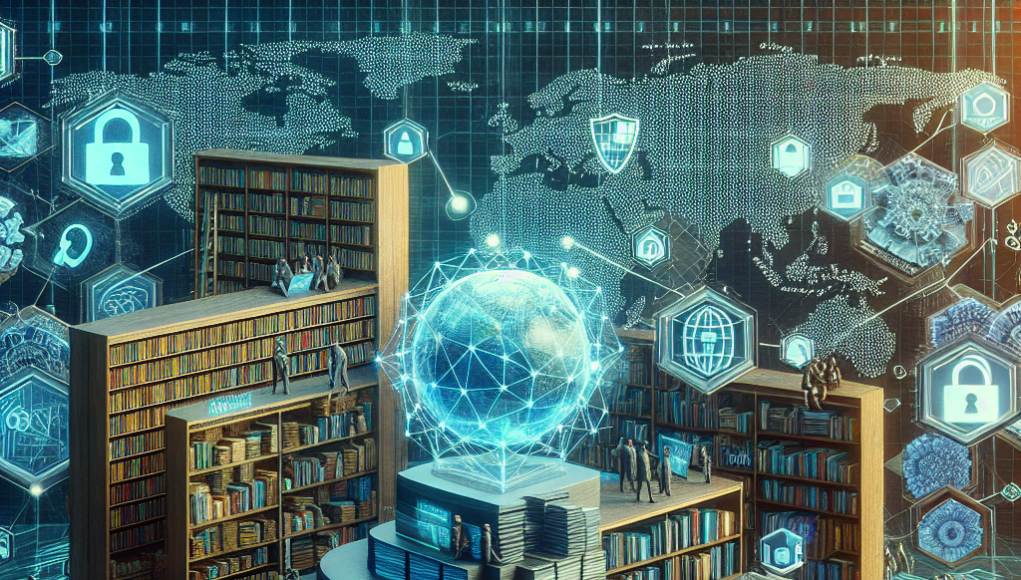In recent years, the internet has undergone profound transformations, evolving from a static repository of information to an interactive platform that connects billions of people globally. Now, we stand on the brink of another monumental shift with the emergence of Web3, the decentralized web. Promising to redefine our digital interactions, Web3 is set to enhance privacy, security, and user control. This article delves into the foundational aspects of Web3 technology, highlights the key innovations propelling it forward, and examines the potential impacts it may have on digital ecosystems.
Understanding the Foundations of Web3 Technology
Web3, often referred to as the decentralized web, represents the next generation of internet technology. Unlike its predecessors, Web3 aims to decentralize control away from centralized entities like tech giants, redistributing power to individual users. This shift is facilitated by blockchain technology, which underpins Web3’s architecture. Blockchains offer a distributed ledger system that ensures transparency, immutability, and security, essential characteristics for a decentralized network.
At the core of Web3 is the principle of decentralization. By removing intermediaries, Web3 allows for peer-to-peer interactions, enabling users to engage directly without relying on central servers or authorities. This approach not only enhances privacy but also reduces the risk of data breaches, censorship, and manipulation, addressing some of the significant concerns associated with the traditional web.
Smart contracts are another fundamental component of Web3. These self-executing contracts with the terms of the agreement directly written into code allow for automated and trustless transactions. By eliminating the need for third-party facilitators, smart contracts streamline processes and reduce costs, offering a more efficient and transparent alternative to conventional agreements.
Decentralized applications or dApps are a crucial element of the Web3 ecosystem. Unlike traditional applications that rely on centralized servers, dApps operate on blockchain networks, offering enhanced security and user control. Users can interact with dApps without the need for intermediaries, ensuring a more private and secure experience. This shift towards decentralized applications represents a significant departure from the current web paradigm.
Another foundational aspect of Web3 is the concept of digital identity. In Web3, users can maintain control over their digital identities, deciding what information to share and with whom. This contrasts sharply with the current web, where user data is often collected and monetized by centralized platforms. Web3’s approach to digital identity empowers users, giving them greater control over their online presence and privacy.
Finally, the development of decentralized finance (DeFi) is a testament to the transformative potential of Web3 technology. DeFi leverages blockchain technology to recreate and enhance traditional financial systems, offering services like lending, borrowing, and trading without the need for centralized institutions. This democratization of financial services exemplifies the broader ethos of Web3, which seeks to create a more equitable and accessible digital landscape.
Key Innovations Driving the Decentralized Web
Several key innovations are driving the evolution of Web3, each contributing to the realization of a decentralized internet. One such innovation is the development of advanced consensus mechanisms. While early blockchains like Bitcoin rely on energy-intensive proof-of-work systems, newer platforms are adopting more efficient methods like proof-of-stake, which reduce energy consumption and increase scalability without compromising security.
Interoperability is another critical innovation propelling Web3 forward. As multiple blockchain networks emerge, ensuring they can communicate and interact seamlessly is vital. Innovations in cross-chain technology are enabling different blockchains to share information and value, creating a more interconnected and cohesive ecosystem. This interoperability is essential for the widespread adoption and success of Web3 initiatives.
Decentralized storage solutions are also fundamental to the growth of Web3. Traditional cloud storage services are centralized, posing risks of data loss and censorship. Web3 introduces decentralized storage networks like IPFS (InterPlanetary File System) and Filecoin, which distribute data across multiple nodes, enhancing security, redundancy, and access speed. This shift towards decentralized storage is crucial for building a resilient and censorship-resistant web.
The emergence of decentralized autonomous organizations (DAOs) represents a significant innovation in governance models within the Web3 space. DAOs operate on blockchain technology, allowing for transparent and democratic decision-making processes. By enabling communities to govern themselves without centralized leadership, DAOs offer a novel approach to organizational management, aligning with the decentralized ethos of Web3.
Privacy-enhancing technologies are also at the forefront of Web3 innovations. As privacy concerns continue to grow, Web3 is pioneering new methods to protect user data and identities. Techniques like zero-knowledge proofs and homomorphic encryption allow for secure transactions and interactions without revealing sensitive information. These technologies are pivotal in establishing trust and security in a decentralized environment.
Finally, tokenization is a transformative innovation driving Web3. By converting real-world assets into digital tokens on the blockchain, Web3 enables fractional ownership, increased liquidity, and broader access to investment opportunities. Tokenization has the potential to revolutionize various industries, from real estate to art, democratizing access and creating new economic models within the decentralized web.
Potential Impacts of Web3 on Digital Ecosystems
The advent of Web3 is poised to have profound impacts on digital ecosystems, reshaping how we interact with technology and each other. One of the most significant changes is the shift in power dynamics. By decentralizing control, Web3 empowers users, giving them greater autonomy over their data and digital interactions. This redistribution of power challenges the dominance of centralized platforms, fostering a more equitable digital landscape.
Web3’s impact on data privacy and security is another critical consideration. With decentralized systems, users have greater control over their personal information, reducing the risks associated with data breaches and unauthorized access. This enhanced privacy and security could lead to increased trust in digital interactions, encouraging more people to engage with online platforms and services.
The economic implications of Web3 are also noteworthy. By enabling decentralized finance and tokenization, Web3 opens up new avenues for economic participation and innovation. Individuals can access financial services without traditional barriers, and businesses can explore new models of ownership and value exchange. This democratization of finance has the potential to drive economic growth and inclusion on a global scale.
Web3 is also likely to transform the way we consume and share digital content. With decentralized platforms, content creators can bypass traditional gatekeepers, reaching audiences directly and retaining more control over their work. This shift could lead to a more diverse and vibrant digital content ecosystem, where creators are fairly compensated, and users have access to a wider range of content.
The educational landscape may also be impacted by Web3. Decentralized learning platforms can offer more accessible and personalized education experiences, breaking down geographical and financial barriers. By leveraging blockchain technology, these platforms can provide verifiable and tamper-proof credentials, enhancing the credibility and portability of educational achievements.
Finally, Web3’s emphasis on community-driven governance through DAOs could influence how communities organize and make decisions. By fostering a culture of transparency and collaboration, DAOs have the potential to inspire new forms of social and political engagement, empowering individuals to have a more active role in shaping the digital and physical environments they inhabit.
As we stand on the precipice of the Web3 era, the potential for a more decentralized and user-centric internet is both exciting and challenging. While Web3 promises to address many of the issues inherent in the current web, it also presents new questions and complexities that will need to be navigated. As technology continues to evolve, the realization of Web3’s full potential will depend on collaboration, innovation, and a shared commitment to creating a more equitable and sustainable digital future. Whether Web3 will fundamentally transform the internet as we know it remains to be seen, but its foundations and innovations offer a compelling vision of what the future might hold.










